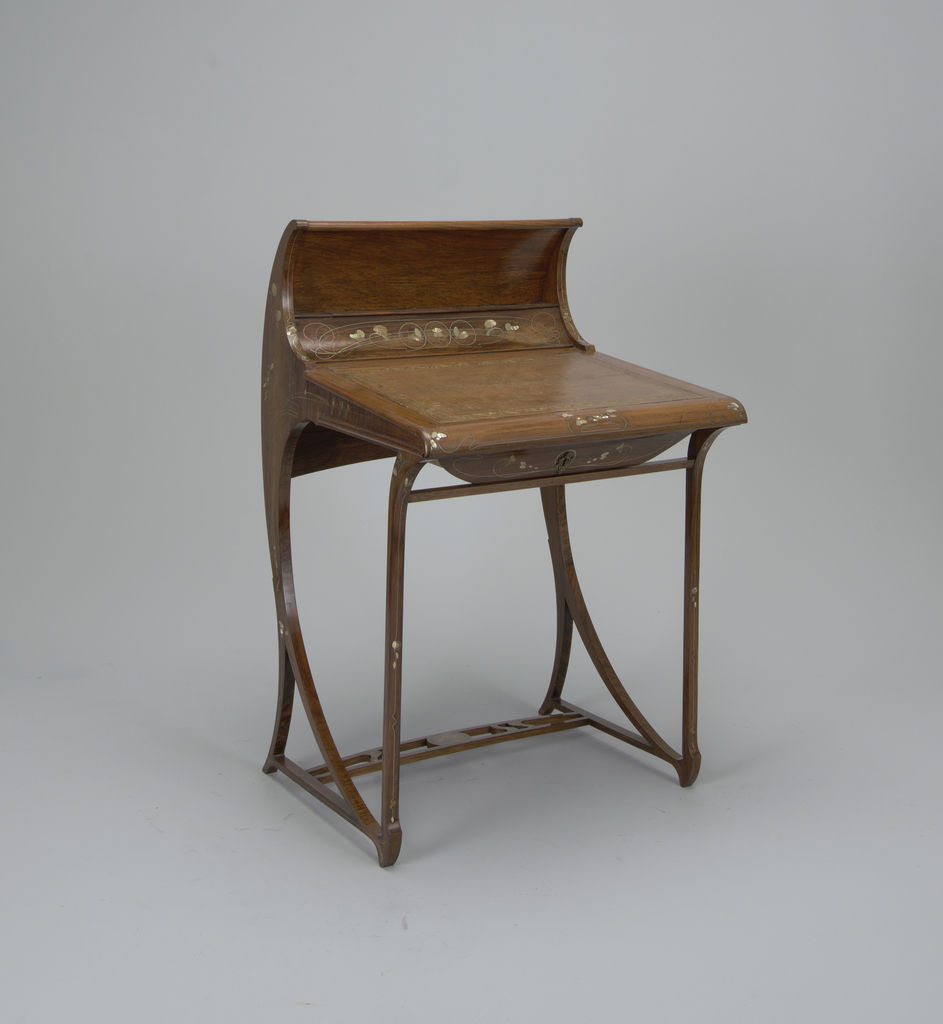This desk is an example of the Italian interpretation of the Art Nouveau style, known as Stile Floreale. This desk model was exhibited by Carlo Zen, a Milanese furniture manufacturer, at the 1902 First International Exposition of Modern Decorative Arts, in Turin, Italy. The exhibition helped Italy to show the rest of the world that it could create modern designs that competed with others on an international scale. The Italian style was especially influenced by the floral fabrics of Liberty and Company, which were made available to Italian designers for use in interiors, which is why the Italian Art Nouveau style references nature and the English arts and crafts style.[1]
The Stile Floreale was the main style exhibited by Italian designers at this exposition. The exposition and the development of the Stile Floreale helped Italian designers to think more progressively, allowing them to create their own version of Art Nouveau and later styles.[2] Prior to the exposition, Italian designers were not part of the design reform that was happening in the rest of Europe.
The maker of this desk, Carlo Zen, manufactured Art Nouveau furniture, which gained popularity in Italy after the exposition. He was known for his inlaid mother-of-pearl designs, which can be seen in this desk. The front of the desk has simple curving shapes, with petals and leaves in mother-of-pearl, which extends to the sides of the desk and its legs. The back of the desk has branches of brass and silver curving down with mother-of-pearl leaves, which shows the Asian influence seen in many Art Nouveau designs.[3]
===
[1] Gabriel P. Weisberg, Stile Floreale: The Cult of Nature in Italian Design. (Miami: Wolfsonian Foundation, 1988): 21.
[2] Ibid: 17.
[3] The Museum of Modern Art has the chair that went with this desk.
===
Audrey Sutton is a graduate student in the History of Design and Curatorial Studies program at the Cooper Hewitt, and is a Fellow in the Product Design and Decorative Arts Department.

One thought on “A Bit of Zen”
Mel Byars on August 24, 2016 at 1:08 pm
Please avoid translating foreign institutions, exhibitions, etc., into English. If deemed necessary, include English translations within parentheses.